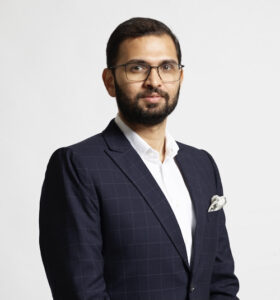

In this installment of Kluwer Arbitration Blog’s “Interview with our Editors”, we highlight India’s position in the field, by speaking with Madhukeshwar Desai and Neeti Sachdeva of Mumbai Centre for International Arbitration (MCIA). Madhukeshwar, its CEO, and Neeti, its Registrar & Secretary-General, jointly present MCIA’s journey since its establishment in 2016. They also discuss how the Indian arbitration landscape continues to evolve into a mature arbitration hub.
Madhukeshwar and Neeti, thank you for joining us on the Kluwer Arbitration Blog. We are glad to have you here to share your unique perspectives with the international arbitration community.
- Could you briefly introduce our readers to MCIA and your roles there?
Madhukeshwar Desai (“MD”): Most successful financial centres across the world boast of an international arbitration institution that is independent, credible, and that enjoys the support of the domestic market. Until the MCIA was set up in 2016, Mumbai, an important Indian and global financial centre, lacked a world-class arbitral institution.
Furthermore, the vast majority of arbitrations conducted in India were not institutional but ad hoc. MCIA, thus, was set up with the aim to bring international best practices in institutional arbitration to India, while recognising the nuances of the Indian domestic market. To that end, we created the MCIA Rules 2016 (“MCIA Rules”) which reflect international best practices and are also attuned to the Indian market. We believe they are the only institutional rules that do so. The MCIA Rules are implemented in a consistent, fair, and transparent manner via the arbitrations that we administer.
MCIA is also resolute in its mission to catalyse a vibrant ecosystem for arbitration in India that benefits all stakeholders- from the arbitrators to the lawyers, law firms, central and state governments, businesses, and other clients.
For example, we launched the YoungMCIA, to bring young talented lawyers into the arbitration world; hosted many training programs on our own and in collaboration with the best and the brightest from India and elsewhere; and organised events across India and other jurisdictions to elevate and expand the conversation around arbitration in India.
As the CEO, I concern myself with all matters related to the running of the institution except for those relating to the MCIA Rules and its implementation. As the Registrar and Secretary General, Neeti is in charge of the Secretariat where she is responsible for the due implementation of the MCIA Rules and for marketing the institution more broadly.
- In 2021, MCIA will complete its first five years. According to MCIA’s “4th Edition Report” until its third-year since establishment (2018-2019), it had administered 8 cases and hosted over 650 arbitration sessions. You have recently released the Annual Report 2020. Could you provide some highlights from the report for our readers?
MD: MCIA has seen more than a 150% growth in the total number of cases being administered by us. We have received 12 new matters in the calendar year 2020 of which 9 arose from contracts containing an MCIA arbitration clause. Significantly, the parties are increasingly choosing to incorporate clauses pointing to MCIA into their contracts.
Equally significant is the fact that three recent arbitrations were referred to MCIA by Indian courts: the Supreme Court of India referred two ad hoc arbitrations to be administered by the MCIA under the MCIA Rules with the parties consent, and the Bombay High Court referred yet another ad hoc arbitration to be conducted in accordance with the MCIA Rules.
These are important precedents that will go a long way in promoting institutional arbitration in India.
Importantly, also heartening is the increasing geographical diversity in the venue and seat of disputes we are administering. This year, we had parties from across India such as Agra, Amritsar, Bengaluru, Gujarat, Hyderabad, Indore, Jharkhand, Kolkata, Noida, and Telangana. Additionally, the MCIA is administering two international arbitrations with at least one party from Mauritius in both cases.
In 2020 alone, the MCIA received disputes worth over USD 180 million. We think that this is just the start of what we hope to be continued exponential growth going forward.
- What are the top three advantages of having a case administered under MCIA Rules?
Neeti Sachdeva (“NS”): Institutional arbitration over ad hoc arbitration: MCIA has played a transformative role in promoting the culture of institutional arbitration in India. The first and foremost advantage of having a case administered under the MCIA Rules is having the arbitration conducted under specialized rules agreed to by the parties which reflect international best practices, including, but not limited to, oversight and scrutiny by the institution; provisions for expedited arbitration and emergency arbitration; all of which would be missing in a regular ad hoc arbitration.
The second advantage would be the cap on maximum administrative and arbitrator fees incurred by the parties during the entire arbitration. Under the MCIA Schedule of Fees (“Schedule”), the total fees are calculated on an ad valorem basis and the Schedule reflects the minimum as well as the maximum fees that the parties will have to pay for the resolution of a dispute under the MCIA Rules. In the Indian context, this gives parties a clear understanding of what the arbitration will cost if they were to invoke the arbitration agreement.
The third advantage, that ties in with the first one, is the process for appointment of arbitrators for two reasons: (i) If one of the parties in an ad hoc arbitration is uncooperative, one has to approach the court for the appointment which is both time-consuming and expensive. In an MCIA administered arbitration, under the MCIA Rules, the MCIA Council has the power to appoint, hence is efficient, fast, and cost-effective; (ii) The MCIA Council comprises some of the world’s leading arbitration practitioners, who are equipped to identify the right arbitrators, with the necessary specialization, for each dispute.
- Indians are amongst the top nationalities to arbitrate at international arbitral institutions and that is reflected in recent case-load reports of SIAC (where India stood at the first place) and ICC (where the number of cases with an Indian party tripled from the previous year, thus, taking it from the fifteenth place in 2018 to the second place in 2019). While Singapore and Hong Kong have established themselves as leading arbitration jurisdictions in the region, India continues to play catch-up. What more could the legislature and the executive do to create the right environment to make India an attractive international arbitration hub?
MD: The foundation is being laid by the executive and legislative branches to strengthen India’s position as a favourable jurisdiction for arbitration. Even if one looks at Singapore or Hong Kong, they did not become recognised centres for international arbitration overnight – it took them more than two decades to arrive at the recognition that you refer to. I believe that India is on a similar journey, but one that will hopefully get us to the destination sooner, given the clear direction from the government, the courts, and the users of arbitration in India. MCIA, on its part, looks forward to playing a significant role in accelerating that journey.
NS: There is a clear and concerted effort from the government, and the legal community to move towards institutional arbitration and make India a favourable seat for arbitration. There is no doubt that the MCIA has benefited greatly from this.
- What is your take on the Indian judiciary’s performance in promoting a) the arbitration culture in India, and b) enforcement of foreign arbitral awards in India?
NS: Like the legislature and the executive (as discussed above), the Indian judiciary continues to show its commitment towards promoting arbitration culture in India and in particular, institutional arbitration. We see this in the judgments from the courts. We also see this when the Indian courts repose faith in MCIA’s work and refer cases to us for both, the appointment of arbitrators as well as administration. As mentioned above, to date, the Supreme Court of India has referred three matters to us. Of these, one is an international dispute where MCIA was entrusted with the responsibility of appointing the tribunal. The other two cases have been recently referred to MCIA for administration under its rules. Both these cases involve significant business houses of India.
In addition to this, the Bombay High Court has also referred two cases to be administered under MCIA rules. One of these cases was referred to MCIA in 2020 and involves a multi-million dollar claim.
- You have recently announced “Call for Arbitrators” to expand MCIA’s list of eligible arbitrators. Could you tell us more about your arbitrator roster?
NS: As noted above, we have recently had an influx of cases and we expect more cases to come our way. In anticipation of that, we put out a ‘Call for Arbitrators’, so that we are adequately prepared for the role that we have to play in terms of appointing tribunal members.
While anyone may choose to apply, we engage in a robust selection process before adding individuals to the list. The criteria we use is broadly based on, but not limited to those listed below, in no particular order of importance:
- The number of cases the applicant has acted as an arbitrator
- The number of years at the bar (if an advocate)
- Area of expertise
- Accreditation from bodies of repute, such as the CIArb
- Jurisdiction/location
We will continue to accept applications on a rolling basis from both Indian and international practitioners. We maintain an internal list and do not publish it. Nor do we make this list available to anyone outside the MCIA.
- How does YoungMCIA galvanize the energy of students and fresh graduates to promote institutional arbitration in India?
MD: India does not have a dedicated arbitration bar, but it does have a large number of young people that want to establish a practice that is predominantly arbitration-driven. To that end, the YoungMCIA creates a community and a safe space where students and young professionals gather to share thoughts, exchange ideas, and interact with like-minded individuals. In a pre-Covid world, most YoungMCIA events were a combination of training exercises – such as the ‘Lifeline of an Arbitration’ series (now done virtually) and social gathering aimed at facilitating interactions with senior members of the bar, who may otherwise be inaccessible to young practitioners.
We now have over 1300 YoungMCIA members, a strong community that galvanize the Young MCIA, and not the other way around.
Thank you for your time and perspectives – we wish MCIA continued success!
This interview is part of Kluwer Arbitration Blog’s “Interviews with Our Editors” series. Past interviews are available here.
________________________
To make sure you do not miss out on regular updates from the Kluwer Arbitration Blog, please subscribe here. To submit a proposal for a blog post, please consult our Editorial Guidelines.


